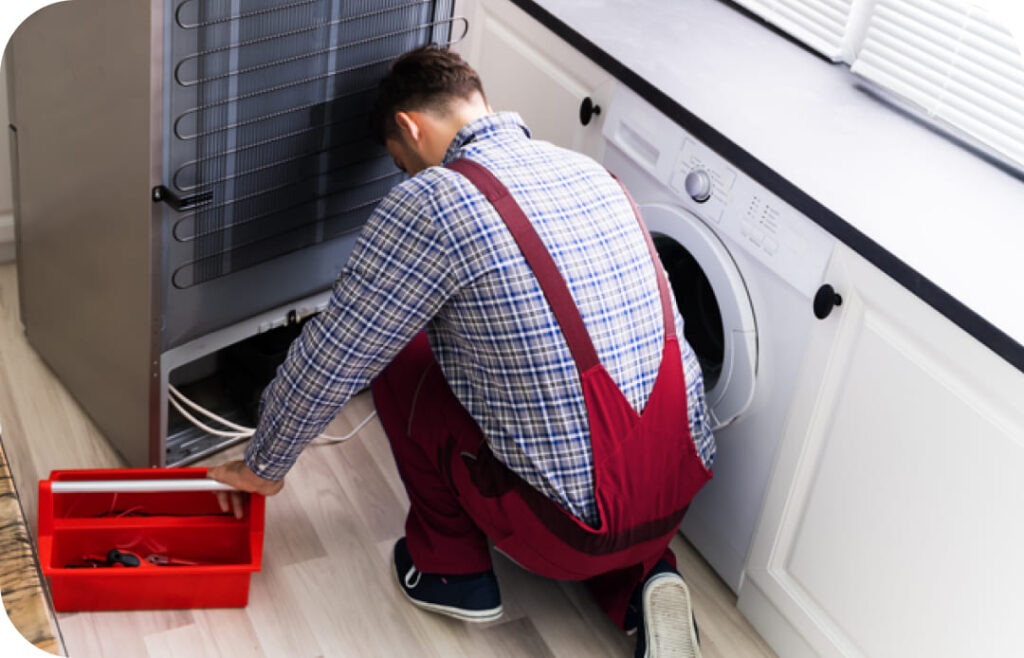A refrigerator door that won’t close properly can quickly turn from a minor annoyance into a real headache. Not only does it affect food safety, but it also makes your fridge work harder, which can drive up energy bills or lead to bigger breakdowns.
In this guide, we’ll break down the most common reasons your fridge door might not be sealing or staying closed—and how you can troubleshoot and possibly fix the issue yourself. If you’ve tried everything and still need help, our local refrigerator repair experts are here for fast, same-day service. You can even book online and get $25 off.
1. Something’s Blocking the Door
Let’s start with the simplest (and most overlooked) cause. Take a look inside your fridge:
- Are food containers, bottles, or drawers sticking out slightly?
- Is something jamming the door seal from closing fully?
What to do:
Remove any oversized or oddly shaped items that might be obstructing the door. Also, check if drawers and shelves are pushed in all the way. Sometimes, a misplaced crisper drawer can be the only thing keeping your door ajar.
2. Dirty or Damaged Door Gasket
The gasket is the soft rubber seal that runs around the edge of the fridge door. It’s what keeps cold air in and warm air out. If it’s dirty, cracked, or loose, your fridge door won’t close properly—or it might bounce open after you shut it.
Fix it yourself:
- Wipe the gasket clean with warm, soapy water and a cloth.
- Look for cracks or wear. If it’s damaged, you’ll need to replace it.
- Use a hairdryer to gently soften and reshape a warped gasket (just be careful not to overheat it).
Pro tip:
Slip a piece of paper between the gasket and the fridge body. If you can pull it out easily without resistance, the seal isn’t tight enough.
3. Fridge Is Not Level
Yes, your refrigerator needs to sit level—or even slightly tilted back—to help the door close and stay shut on its own. If the front of your fridge is too low, the door may naturally swing open.
How to check:
- Place a level on top of your fridge.
- Adjust the front legs or leveling feet (usually found behind the kick plate at the bottom) until the front is just a little higher than the back.
This small tweak can make a big difference—and it’s a totally DIY-friendly job.
4. Hinges or Door Alignment Issues
Over time, fridge door hinges can loosen or sag—especially if the door is often overloaded or used heavily.
Check for:
- Loose screws on the upper and lower hinges.
- Signs the door is hanging lower than usual.
- Unusual gaps in the gasket seal when the door is closed.
Solution:
Tighten hinge screws carefully. In some cases, the door may need to be lifted slightly as you tighten the top hinge to realign it.
If the hinges are worn out or bent, you might need a replacement hinge kit—which is best handled by a technician.
5. Faulty Door Seal Magnet or Internal Mechanism
Some modern fridges have magnetic strips inside the gasket or even mechanisms that gently pull the door shut when it’s close. If those magnets fail or the internal components break down, your door may stop closing properly.
This is a more technical issue, and parts might not be easy to access.
In this case:
It might be time to call in a local fridge repair technician. If you’re in a hurry, we offer emergency refrigerator repair near me with free service call with repair.
Still Won’t Stay Closed? Let the Pros Handle It
If you’ve walked through all the steps above and your fridge door still refuses to stay shut, don’t wait—especially if food spoilage is on the line. Our team offers express, same-day fridge repair throughout the Toronto area.
Book your appointment today through our quick form. And don’t forget—book online and get $25 off. We’re here when you need a reliable fridge repair near you that’s fast, friendly, and affordable.

